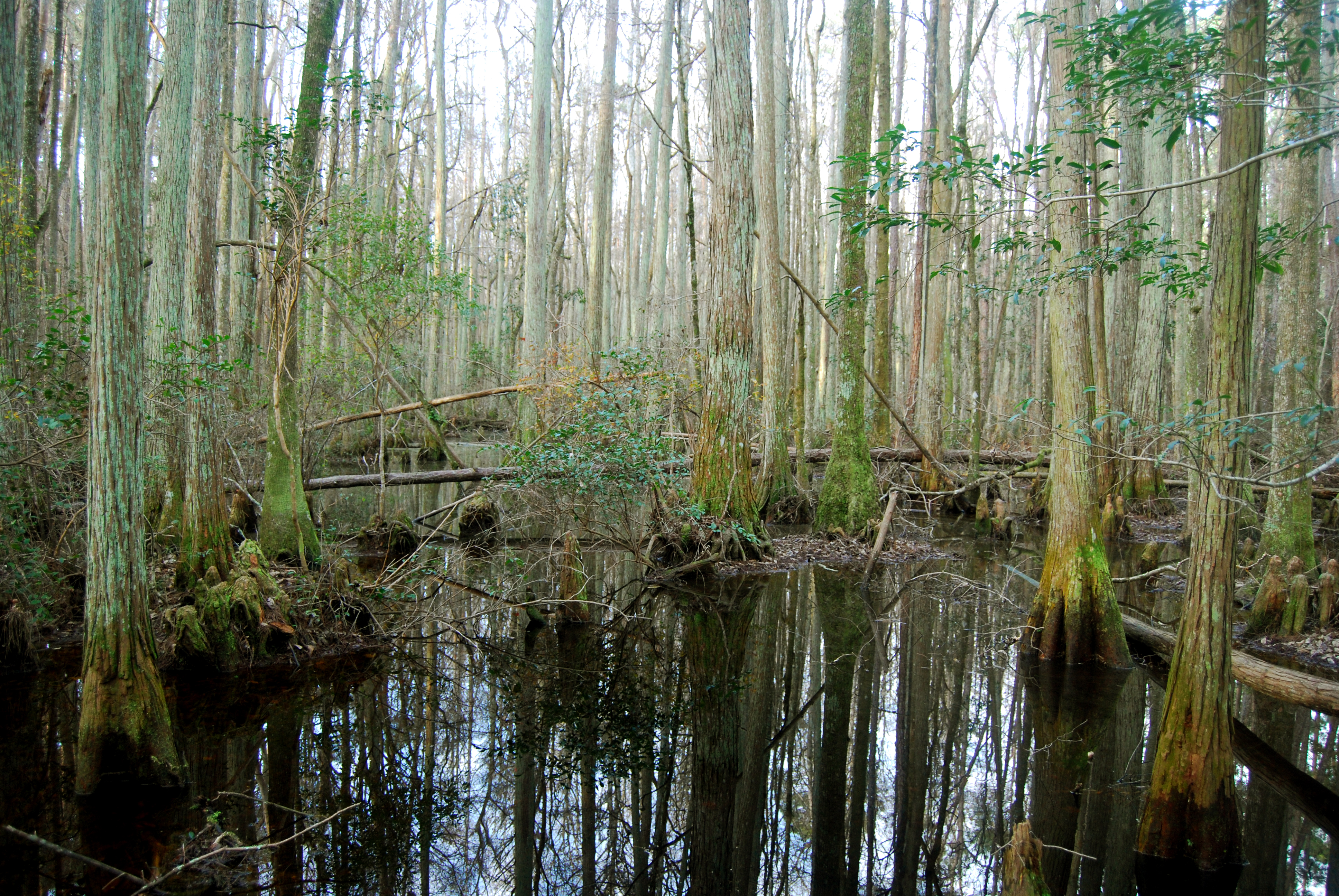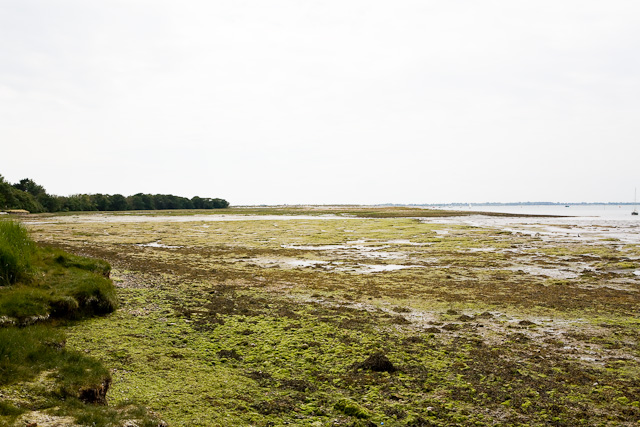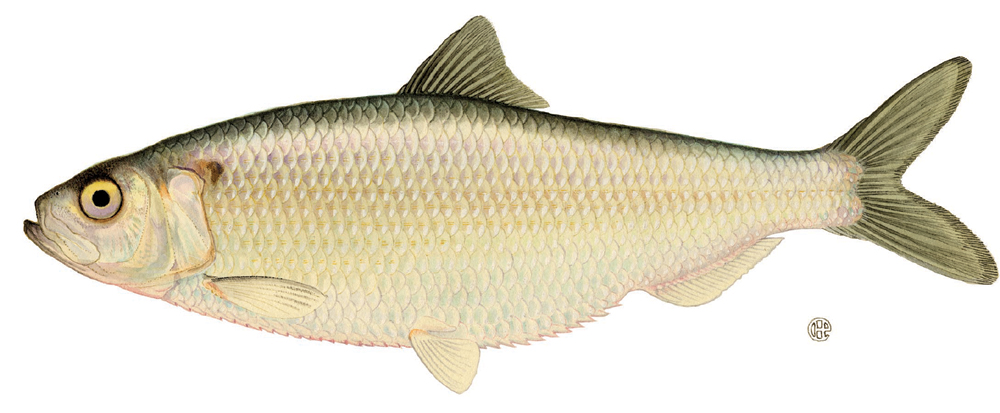|
Mattawoman Creek
Mattawoman Creek is a U.S. Geological Survey. National Hydrography Dataset high-resolution flowline dataThe National Map, accessed August 15, 2011 coastal-plain tributary to the tidal Potomac River with a mouth at Indian Head, Maryland, downstream of Washington, D.C. It comprises a river flowing through Prince George's and Charles counties and a tidal-freshwater estuary in Charles County. About three-fourths of its watershed lies in Charles County, with the remainder in Prince George's County immediately to the north. History Mattawoman appears on Capt. John Smith's circa-1608 map as ''Mataughquamend'', an Algonquian compound translated as “where one goes pleasantly.” Today, Mattawoman Creek is listed by the Environmental Protection Agency (EPA) as impaired under Section 303(d) of the Clean Water Act for excess nutrients, sediment, and loss of living resources. At the same time, because it is the southernmost Potomac River freshwater estuary in Maryland, Mattawoman h ... [...More Info...] [...Related Items...] OR: [Wikipedia] [Google] [Baidu] |
Mattawoman Tidal With Two Egrets In Flight 27-259
The Mattawoman (also known as Mattawomen) were a group of Native Americans in the United States, Native Americans living along the Western Shore of Maryland on the Chesapeake Bay at the time of English colonization. They lived along Mattawoman Creek in present-day Charles County, Maryland. They were also recorded in the early 17th century by explorer John Smith (explorer), John Smith at Quantico Creek in Prince William County, Virginia. He called them ''Pamacocack''. One of the Algonquian languages, Algonquian language-speaking coastal tribes, the Mattawomen survived in the Chesapeake Bay area until 1735. They were under the loose domination of the paramount chiefdom of the Piscataway tribe, Piscataway, also an Algonquian languages, Algonquian-language tribe. Relations with Maryland The Mattawomans had a cordial relationship with the Maryland government. They were once armed, along with the Piscataway people, Piscataways and Pamunkey, Pamunkeys, with "matchcoats, corn, powde ... [...More Info...] [...Related Items...] OR: [Wikipedia] [Google] [Baidu] |
Chesapeake Bay
The Chesapeake Bay ( ) is the largest estuary in the United States. The Bay is located in the Mid-Atlantic (United States), Mid-Atlantic region and is primarily separated from the Atlantic Ocean by the Delmarva Peninsula (including the parts: the Eastern Shore of Maryland / Eastern Shore of Virginia and the state of Delaware) with its mouth of the Bay at the south end located between Cape Henry and Cape Charles (headland), Cape Charles. With its northern portion in Maryland and the southern part in Virginia, the Chesapeake Bay is a very important feature for the ecology and economy of those two states, as well as others surrounding within its watershed. More than 150 major rivers and streams flow into the Bay's drainage basin, which covers parts of six states (New York, Pennsylvania, Delaware, Maryland, Virginia and West Virginia) and all of District of Columbia. The Bay is approximately long from its northern headwaters in the Susquehanna River to its outlet in the Atlantic Ocea ... [...More Info...] [...Related Items...] OR: [Wikipedia] [Google] [Baidu] |
Bryans Road, Maryland
Bryans Road is a census-designated place (CDP) in Charles County, Maryland, United States. Per the 2020 census, the population was 8,650. Bryans Road was named after Oliver Norris Bryan, a 19th-century farmer and scientist who owned and operated Locust Grove Farm near Marshall Hall. The area consisted mostly of tobacco farms until the establishment of the Naval Proving Grounds at Indian Head in 1890. Some commercial establishments came about by the early 1920s, when the name "Bryans Road" first appeared on maps. The construction of Maryland Route 210 (Indian Head Highway) during World War II brought new traffic. By the early 1960s, Bryans Road became an established bedroom community for both Indian Head and Washington. At the main intersection of Bryans Road, a shopping center includes a supermarket, various gas stations, and assorted retail stores that serve the community. Local residents commute to work at the Indian Head Naval Surface Warfare Center, while others commute to em ... [...More Info...] [...Related Items...] OR: [Wikipedia] [Google] [Baidu] |
Reptile
Reptiles, as most commonly defined are the animals in the class Reptilia ( ), a paraphyletic grouping comprising all sauropsids except birds. Living reptiles comprise turtles, crocodilians, squamates (lizards and snakes) and rhynchocephalians (tuatara). As of March 2022, the Reptile Database includes about 11,700 species. In the traditional Linnaean classification system, birds are considered a separate class to reptiles. However, crocodilians are more closely related to birds than they are to other living reptiles, and so modern cladistic classification systems include birds within Reptilia, redefining the term as a clade. Other cladistic definitions abandon the term reptile altogether in favor of the clade Sauropsida, which refers to all amniotes more closely related to modern reptiles than to mammals. The study of the traditional reptile orders, historically combined with that of modern amphibians, is called herpetology. The earliest known proto-reptiles originated around ... [...More Info...] [...Related Items...] OR: [Wikipedia] [Google] [Baidu] |
Amphibian
Amphibians are tetrapod, four-limbed and ectothermic vertebrates of the Class (biology), class Amphibia. All living amphibians belong to the group Lissamphibia. They inhabit a wide variety of habitats, with most species living within terrestrial animal, terrestrial, fossorial, arboreal or freshwater aquatic ecosystems. Thus amphibians typically start out as larvae living in water, but some species have developed behavioural adaptations to bypass this. The young generally undergo metamorphosis from larva with gills to an adult air-breathing form with lungs. Amphibians use their skin as a secondary respiratory surface and some small terrestrial salamanders and frogs lack lungs and rely entirely on their skin. They are superficially similar to reptiles like lizards but, along with mammals and birds, reptiles are amniotes and do not require water bodies in which to breed. With their complex reproductive needs and permeable skins, amphibians are often ecological indicators; in re ... [...More Info...] [...Related Items...] OR: [Wikipedia] [Google] [Baidu] |
Palustrine
Palustrine wetlands include any inland wetland that contains ocean-derived salts in concentrations of less than 0.5 parts per thousand, and is non-tidal. The word ''palustrine'' comes from the Latin word ''palus'' or marsh. Wetlands within this category include inland marshes and swamps as well as bogs, fens, pocosins, tundra and floodplains. According to the Cowardin classification system Palustrine wetlands can also be considered the area on the side of a river or a lake, as long as they are covered by vegetation such as trees, shrubs, and emergent plants. Classification Palustrine wetlands are one of five systems of wetlands within the Cowardin classification system. This system was created by Lewis Cowardin and others from the United States Fish and Wildlife Service in 1987. The other systems are: * Marine wetlands, exposed to the open ocean * Estuarine wetlands, partially enclosed by land and containing a mix of fresh and salt water * Riverine wetlands, associated wi ... [...More Info...] [...Related Items...] OR: [Wikipedia] [Google] [Baidu] |
Tidal Marsh
A tidal marsh (also known as a type of "tidal wetland") is a marsh found along rivers, coasts and estuaries which floods and drains by the tidal movement of the adjacent estuary, sea or ocean. Tidal marshes are commonly zoned into lower marshes (also called intertidal marshes) and upper or high marshes, based on their elevation above sea level. A middle marsh zone also exists for tidal freshwater marshes. Tidal marshes may be further classified into back-barrier marshes, estuarine brackish marshes and tidal freshwater marshes, depending on the influence of sea level. Coastal Coastal tidal marshes are found within coastal watersheds and encompass a variety of types including fresh and salt marshes, bottomland hardwood swamps, mangrove swamps, and palustrine wetlands. Island and barrier island Tidal Marshes also form between a main shoreline and barrier islands. These elongated shifting landforms evolve parallel and in close proximity to the shoreline of a tidal marsh. Many becom ... [...More Info...] [...Related Items...] OR: [Wikipedia] [Google] [Baidu] |
Largemouth Bass
The largemouth bass (''Micropterus salmoides'') is a carnivorous freshwater gamefish in the Centrarchidae ( sunfish) family, a species of black bass native to the eastern and central United States, southeastern Canada and northern Mexico, but widely introduced elsewhere. It is known by a variety of regional names, such as the widemouth bass, bigmouth bass, black bass, bucketmouth, largies, Potter's fish, Florida bass, Florida largemouth, green bass, bucketmouth bass, Green trout, gilsdorf bass, Oswego bass, LMB, and southern largemouth and northern largemouth. The largemouth bass is the state fish of Georgia and Mississippi, and the state freshwater fish of Florida and Alabama. Taxonomy The largemouth bass was first formally described as ''Labrus salmoides'' in 1802 by the French naturalist Bernard Germain de Lacépède with the type locality given as the Carolinas. Lacépède based his description on an illustration of a specimen collected by Louis Bosc near Charleston, S ... [...More Info...] [...Related Items...] OR: [Wikipedia] [Google] [Baidu] |
Yellow Perch
The yellow perch (''Perca flavescens''), commonly referred to as perch, striped perch, American perch, American river perch or preacher is a freshwater perciform fish native to much of North America. The yellow perch was described in 1814 by Samuel Latham Mitchill from New York. It is closely related, and morphologically similar to the European perch (''Perca fluviatilis''); and is sometimes considered a subspecies of its European counterpart. Other common names for yellow perch include American perch, coontail, lake perch, raccoon perch, ring-tail perch, ringed perch, and striped perch. Another nickname for the perch is the Dodd fish. Latitudinal variability in age, growth rates, and size have been observed among populations of yellow perch, likely resulting from differences in day length and annual water temperatures. In many populations, yellow perch often live 9 to 10 years, with adults generally ranging from in length. The world record yellow perch (; ) was caught in May 1 ... [...More Info...] [...Related Items...] OR: [Wikipedia] [Google] [Baidu] |
White Perch
The white perch (''Morone americana'') is not a true perch but is a fish of the temperate bass family, Moronidae, notable as a food and game fish in eastern North America. In some places it is referred to as "Silver Bass". The name "White perch" is sometimes applied to the white crappie. Generally silvery-white in color, hence the name, depending upon habitat and size specimens have begun to develop a darker shade near the dorsal fin and along the top of the fish. This sometimes earns them the nickname "black-back". White perch have been reported up to in length and weighing . Although favoring brackish waters, it is also found in fresh water and coastal areas from the St. Lawrence River and Lake Ontario south to the Pee Dee River in South Carolina, and as far east as Nova Scotia. They are also found in the lower Great Lakes, Finger Lakes, Long Island Sound and nearby coastal areas, Hudson and Mohawk River system, Delaware Bay and Chesapeake Bay. It is also found occasionall ... [...More Info...] [...Related Items...] OR: [Wikipedia] [Google] [Baidu] |
American Shad
The American shad (''Alosa sapidissima'') is a species of anadromous clupeid fish naturally distributed on the North American coast of the North Atlantic, from Newfoundland to Florida, and as an introduced species on the North Pacific coast. The American shad is not closely related to the other North American shads. Rather, it seems to form a lineage that diverged from a common ancestor of the European taxa before these diversified. The American shad has been described as "the fish that fed the (American) nation's founders". Adult shad weigh between , and they have a delicate flavor when cooked. It is considered flavorful enough to not require sauces, herbs, or spices. It can be boiled, filleted and fried in butter, or baked. Traditionally, a little vinegar is sprinkled over it on the plate. In the Eastern United States, roe shads (females) are prized because the eggs are considered a delicacy. The name "shad" derives from the Old English ''sceadd'', meaning "herring"; it is ... [...More Info...] [...Related Items...] OR: [Wikipedia] [Google] [Baidu] |
Blueback Herring
The blueback herring, blueback shad, or summer shad (''Alosa aestivalis'') is an anadromous species of herring from the east coast of North America, with a range from Nova Scotia to Florida. Blueback herring form schools and are believed to migrate offshore to overwinter near the bottom. These fish are silvery in color, have a series of scutes (modified, spiny and keeled scales) along their bellies, and are characterized by deep bluish-green backs. They reach a maximum size of approximately and are believed to live up to 8 years. The most distinguishing characteristic of this species is the black to dusky color of its peritoneum (the lining of the abdominal cavity). It is one of the "typical" North American shads. They are often confused with alewifes because blueback shad and alewives are difficult to distinguish from one another, and together these two species are often regarded collectively as "river herring". Alewives have larger eyes, greater body depth, and pearly t ... [...More Info...] [...Related Items...] OR: [Wikipedia] [Google] [Baidu] |



.png)



.jpg)


